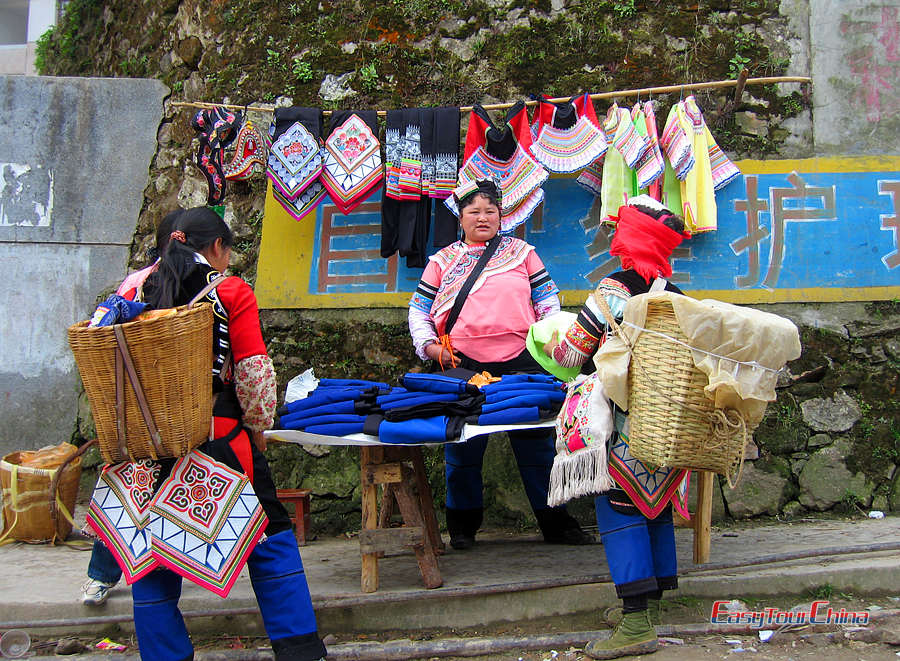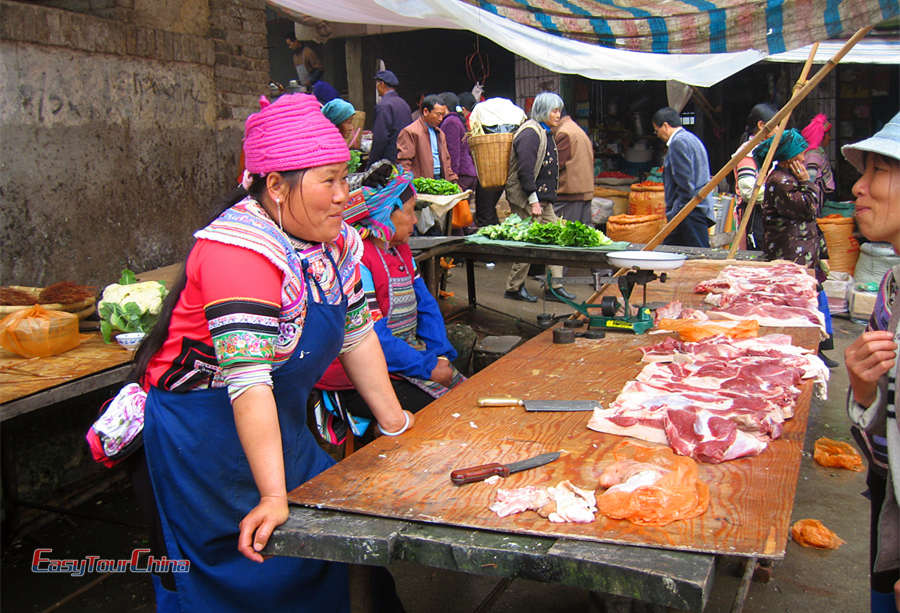Hani
The dark blue garments and silver jewelry worn by Hani women create a simpler, more elegant impression than the attire of many other ethnic minorities in southern Yunnan. Hani girls most enjoy window-shopping at the silversmith's shop in town. The silversmith came to Yuanyang from Sichuan Province more than ten years ago, and business in this small town has been brisk enough to enable him to send his two children to school in Shanghai. He says that to Han people, silver jewelry is purely decoration, but for the Hani people it has many cultural connotations.
Recommended China tours to visit Hani people:
6-day Yuanyang Rice Terraces Tour

As the Silk Road and the Tea and Horse Trails passed through southern Yunnan, about 19 silversmiths settled in the province during the Kangxi reign of the Qing Dynasty and helped to make the province famous for its silver goods. Southern Yunnan was once prosperous, having been the trading center for the metallic minerals, timber and biological resources needed inland. It was during the Ming and Qing dynasties (1368 - 1911) that silver coins began to be minted. Extended periods of self-sufficiency and low circulation of commodities prompted the Hani people to fashion silver coins into jewelry worn as an indication of the level of family wealth. Hani women still abide by this tradition and keep the town silversmith busy. He is handed dozens of silver coins at a time with the request that they be melted down and forged into hair ornaments, necklaces and other items of jewelry. Hani women wear their silver ornamentations in layers reminiscent of the terraces that are their livelihood, and the crab, mussel or waterwheel designs carved on each piece express the Hani reverence for water.
In his work Memories of the Yunnan Horse Racing Festival, famous modern writer Shen Congwen made plain that the main attraction for women at the event was the presence of the master silversmith from the market town, who crafted pieces of jewelry in novel designs on the spot. His materials spread on a piece of cloth on the smooth ground, the silversmith would smelt, forge, drill, gilt, inlay and joint silver into one-off designs on request. Silver jewelry of the Qing Dynasty or the Republican period can still be bought at the market town today.

The Long Street Banquet of Hani People
The Hani New Year, called Angmatu, is celebrated early in the tenth lunar month. The festival lasts 6 days, during which Hani people get together to worship water, the dragon and heaven in expectations of a bumper grain harvest and favorable weather for the coming year.
On the second day of Angmatu, each household contributes to the preparation of 40 Hani style chicken, fish, and minced pork dishes. These are placed on a 700-meter-long dragon-shaped chain of tables from each household in the main street. The street banquet then commences, amid a festive atmosphere of crashing gongs and thundering drums. All participants, young and old, dress in their best. The villagers select an elder male of good moral standing and reputation to sit at the head of the banqueting table. When the time comes to offer sacrifice, his task is to slaughter domestic animals and offer them to the gods on the villagers' behalf.
Anyone fortunate enough to be passing by is urged to join in. To the 4,000 Hani residents, eating, drinking and singing are the best ways of celebrating the New Year. The banquet lasts from noon to 5 p.m.
Yuanyang and Jianshui Hani People
Nestled in the southwest of China, Yuanyang and Jianshui are unknown to many western tourists. Their unique charm is attracting more and more tourists from home and abroad. It is a perfect escape from the flocks of tourists and bustling tour spots.
Related Reading


